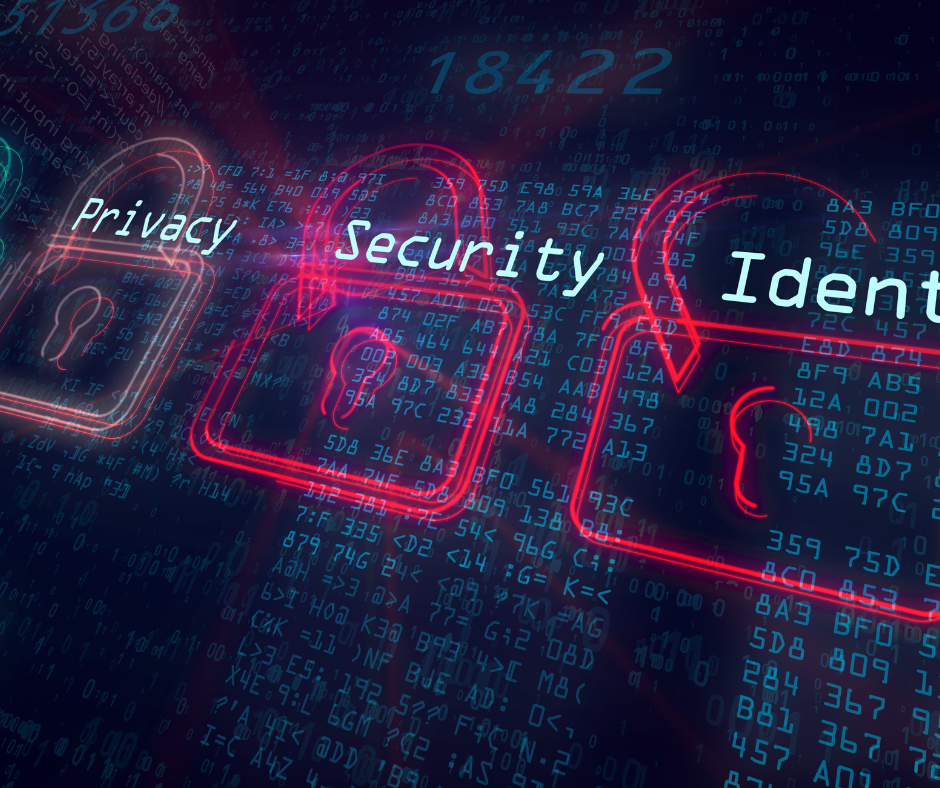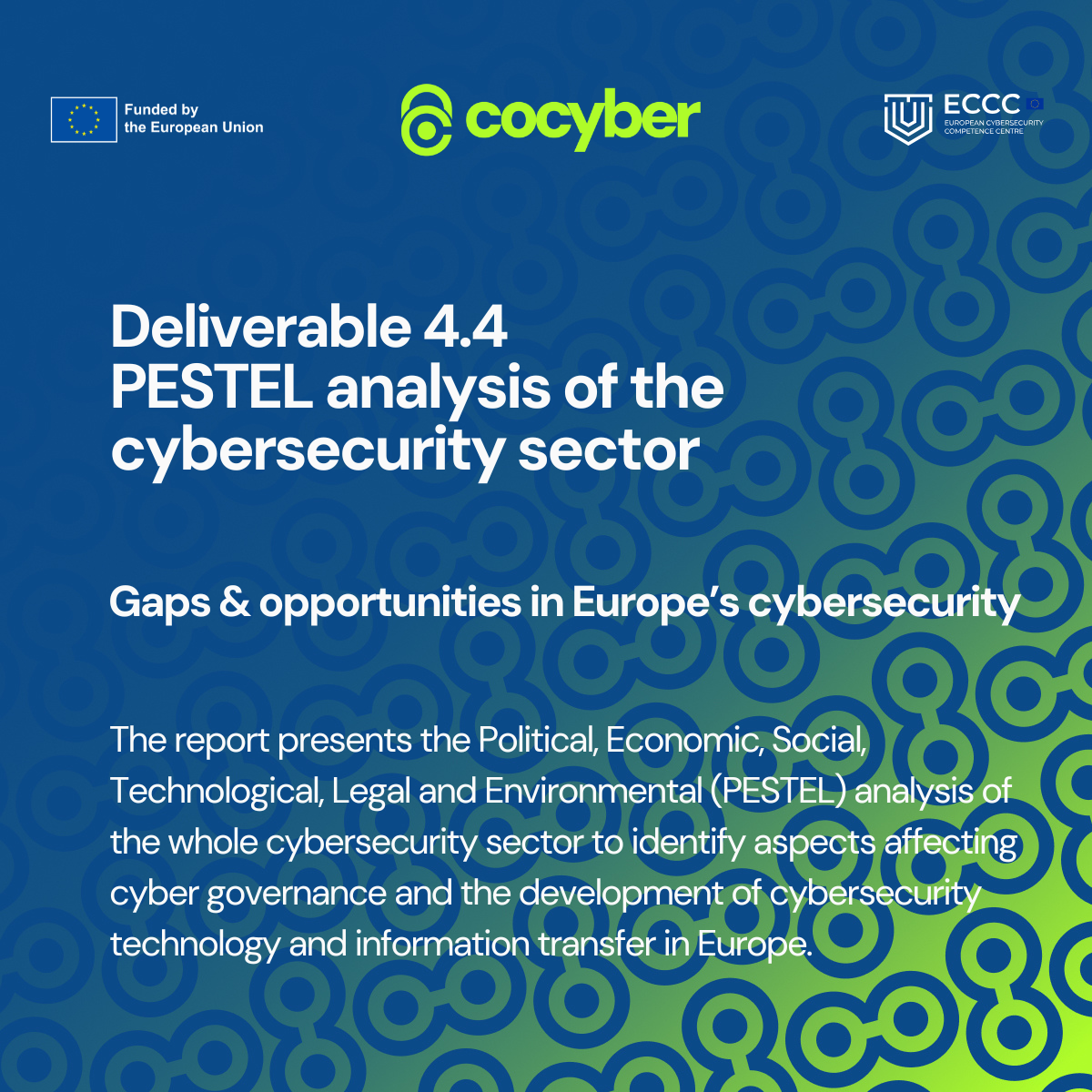PESTEL Analysis of the European Cybersecurity Sector

Europe has made significant progress in cybersecurity regulation and technological innovation, yet challenges remain in ensuring a cohesive and resilient security framework. Differences in policy enforcement, funding allocation, and workforce readiness create vulnerabilities that must be addressed to strengthen collective security."
The COcyber Deliverable D4.4, part of Work Package 4 (WP4): Know-How, Good Practice Sharing, and Information Transfer Activities, assesses the political, economic, social, technological, environmental, and legal dimensions shaping the European cybersecurity sector. It outlines both threats and strategic opportunities, providing insights into the challenges of policy harmonization, investment disparities, and emerging technological risks.

Political Factors: Legislative Challenges and Geopolitical Tensions
Disparities in the implementation of cybersecurity regulations, particularly the NIS2 Directive and Cyber Resilience Act, undermine the EU’s ability to present a unified defense against cross-border threats. While some Member States align their national frameworks with EU directives, others lag behind, leading to inconsistent enforcement and weakened resilience.
Geopolitical tensions further complicate the cybersecurity landscape. State-sponsored cyberattacks targeting critical infrastructure—including healthcare, energy, and telecommunications—underscore the urgent need for enhanced detection, attribution, and response capabilities. In addition, the EU faces challenges in balancing digital sovereignty with global interoperability, particularly in transatlantic data-sharing agreements.
Economic Factors: Funding Disparities and Cybercrime Costs
Economic factors significantly influence cybersecurity readiness across the EU. While funding programs like Digital Europe Programme (DEP) and Horizon Europe provide support, disparities in resource distribution leave less-developed regions struggling to adopt critical innovations such as AI and quantum encryption.
Cybercrime imposes severe financial burdens on businesses and institutions. The report cites an 86% increase in weekly cyberattacks in 2024, with critical sectors like healthcare, energy, and finance experiencing major disruptions. SMEs face particular challenges, as they often lack the financial and technical resources to implement advanced cybersecurity measures.
Social Factors: Workforce Shortages and Public Trust
The shortage of cybersecurity professionals remains one of the most pressing social challenges in the sector. The EU faces a deficit of 350,000 professionals, projected to rise to 500,000 by 2025, making it difficult to implement effective threat detection, incident response, and risk management strategies.
Public trust in cybersecurity governance is also a critical factor. Major data breaches and surveillance concerns have raised awareness but also heightened skepticism toward digital security policies. While initiatives such as European Cybersecurity Month aim to improve digital literacy, disparities across Member States continue to hinder the effectiveness of public awareness campaigns.
Technological Factors: Advances and Infrastructure Challenges
Technological advancements in AI, automation, and quantum encryption offer opportunities for enhancing cybersecurity resilience, but adoption is hindered by fragmented infrastructure and high implementation costs. The report highlights the EU’s need to prioritise investment in emerging technologies while ensuring that advancements align with both civilian and defense requirements.
The growing use of dual-use technologies—those applicable in both civilian and military contexts—raises additional challenges. Innovations such as quantum-resistant encryption and AI-driven cybersecurity tools must be strategically integrated to avoid security gaps.
Environmental Factors: The Sustainability Challenge
Cybersecurity infrastructure has a significant environmental impact, particularly regarding energy-intensive data centers and secure facility construction. The EU must align cybersecurity policies with sustainability objectives, integrating energy-efficient technologies and green computing initiatives to reduce the sector’s carbon footprint.
Legal Factors: Harmonisation and Compliance Gaps
Legal challenges in the EU cybersecurity sector stem from inconsistent enforcement of regulatory frameworks such as GDPR and NIS2. The lack of internationaalignment further complicates compliance, especially in cases involving cross-border data protection and dual-use technology regulations.
Ensuring ethical governance of AI and automation is another critical issue. The EU AI Act and similar initiatives must establish clear guidelines to prevent misuse in defense applications while promoting transparency and accountability in cybersecurity governance.
The COcyber PESTEL analysis underscores the urgent need for a harmonised, strategic approach to cybersecurity in Europe. Addressing regulatory inconsistencies, funding disparities, workforce shortages, and technological gaps is essential for enhancing resilience, fostering innovation, and maintaining strategic autonomy.
Through initiatives like the NIS2 Directive, Cyber Resilience Act, and the European Defence Fund, the EU is positioned to strengthen its cybersecurity framework while aligning with broader goals of digital sovereignty and sustainability.